-
 Bitcoin
Bitcoin $106,754.6083
1.33% -
 Ethereum
Ethereum $2,625.8249
3.80% -
 Tether USDt
Tether USDt $1.0001
-0.03% -
 XRP
XRP $2.1891
1.67% -
 BNB
BNB $654.5220
0.66% -
 Solana
Solana $156.9428
7.28% -
 USDC
USDC $0.9998
0.00% -
 Dogecoin
Dogecoin $0.1780
1.14% -
 TRON
TRON $0.2706
-0.16% -
 Cardano
Cardano $0.6470
2.77% -
 Hyperliquid
Hyperliquid $44.6467
10.24% -
 Sui
Sui $3.1128
3.86% -
 Bitcoin Cash
Bitcoin Cash $455.7646
3.00% -
 Chainlink
Chainlink $13.6858
4.08% -
 UNUS SED LEO
UNUS SED LEO $9.2682
0.21% -
 Avalanche
Avalanche $19.7433
3.79% -
 Stellar
Stellar $0.2616
1.64% -
 Toncoin
Toncoin $3.0222
2.19% -
 Shiba Inu
Shiba Inu $0.0...01220
1.49% -
 Hedera
Hedera $0.1580
2.75% -
 Litecoin
Litecoin $87.4964
2.29% -
 Polkadot
Polkadot $3.8958
3.05% -
 Ethena USDe
Ethena USDe $1.0000
-0.04% -
 Monero
Monero $317.2263
0.26% -
 Bitget Token
Bitget Token $4.5985
1.68% -
 Dai
Dai $0.9999
0.00% -
 Pepe
Pepe $0.0...01140
2.44% -
 Uniswap
Uniswap $7.6065
5.29% -
 Pi
Pi $0.6042
-2.00% -
 Aave
Aave $289.6343
6.02%
Is the golden cross of the 10-day moving average and the 20-day moving average a mid-line buy point?
A golden cross in crypto occurs when the 10-day MA rises above the 20-day MA, signaling potential bullish momentum and a possible uptrend.
Jun 15, 2025 at 09:00 pm
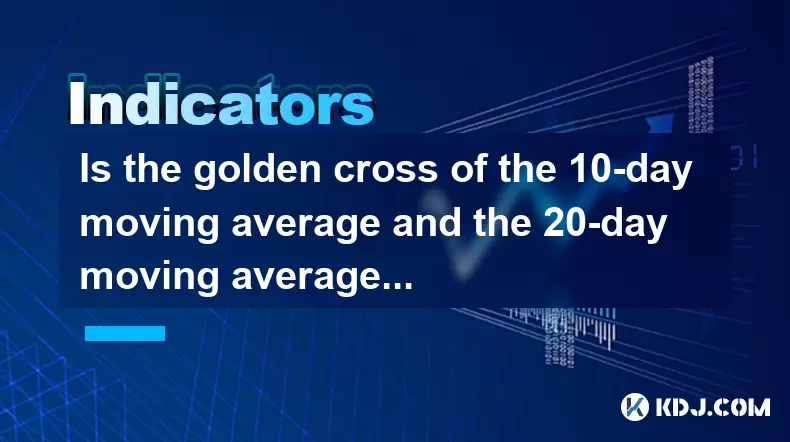
Understanding the Golden Cross in Cryptocurrency Trading
The golden cross is a widely recognized technical analysis pattern that occurs when a short-term moving average crosses above a longer-term moving average. In the context of cryptocurrency trading, this often involves the 10-day moving average (MA) and the 20-day moving average. This crossover is interpreted by many traders as a potential bullish signal, indicating a possible upward trend.
In the volatile world of cryptocurrencies, such signals are crucial for identifying entry points. However, it's important to understand what exactly constitutes a golden cross and whether it should be viewed as a mid-line buy point or simply a confirmation of momentum.
A golden cross forms when the 10-day MA moves above the 20-day MA after a downtrend.
How Moving Averages Work in Crypto Charts
Moving averages smooth out price data over time, helping traders filter out noise and better visualize trends. The 10-day moving average reacts more quickly to recent price changes than the 20-day moving average, which provides a broader view of market sentiment.
- 10-day MA: More sensitive to price fluctuations.
- 20-day MA: Offers a more stable representation of the trend.
When the faster-moving average (10-day) crosses above the slower one (20-day), it suggests that recent buying pressure has overcome selling pressure, potentially signaling the start of an uptrend.
This crossover acts as a lagging indicator, meaning it confirms a trend after it has already begun.
Golden Cross as a Mid-Line Buy Signal
Many traders interpret the golden cross as a sign to enter long positions. But does this qualify as a "mid-line" buy point? To answer that, we need to define what a mid-line means in trading terms.
In technical setups like channels or Bollinger Bands, the mid-line often represents the average price over a period. However, when applied to moving averages, the term "mid-line" can be ambiguous. Some traders may refer to the 20-day MA as a mid-line support level during uptrends.
- If the 10-day MA crosses above the 20-day MA near the middle of a price channel, it could align with a mid-line strategy.
- If the cross occurs far from key support levels, it might not fit the definition of a mid-line buy point.
Traders should assess whether the golden cross aligns with other mid-line indicators before labeling it as such.
How to Identify a Valid Golden Cross on Crypto Charts
Not every crossover leads to a strong trend. Here’s how to identify a valid golden cross:
- Look for a prior downtrend: The golden cross gains significance after a sustained decline.
- Check volume: A surge in volume around the crossover increases its reliability.
- Use additional filters: Confirm with RSI, MACD, or candlestick patterns to avoid false signals.
- Zoom into multiple timeframes: A daily chart golden cross might appear differently on a 4-hour or weekly chart.
To manually verify a golden cross:
- Open a crypto charting platform like TradingView or Binance's native tools.
- Add both the 10-day and 20-day moving averages to your chart.
- Observe if the 10-day MA crosses above the 20-day MA following a downtrend.
- Check volume bars to see if there was increased buying interest at the crossover point.
It's essential to combine the golden cross with other technical tools to increase trade accuracy.
Common Misinterpretations and Risks
One of the biggest pitfalls traders face is treating the golden cross as a guaranteed buy signal without considering the broader market context. Since moving averages are lagging indicators, they can produce false signals in choppy or sideways markets.
- False crossovers: In low-volume or consolidating markets, the golden cross may reverse quickly.
- Whipsaw effect: Prices may briefly cross but then reverse direction, leading to losses.
- Market manipulation: Especially in altcoins, large players can trigger fake breakouts.
To mitigate these risks:
- Always use stop-loss orders when entering trades based on golden cross signals.
- Avoid trading during major news events or low liquidity periods.
- Backtest the effectiveness of the golden cross on historical charts of specific cryptocurrencies.
Risk management is critical when using any technical signal, including the golden cross.
Frequently Asked Questions
Q1: Can the golden cross occur on intraday charts like 1-hour or 4-hour?
Yes, the golden cross can appear on shorter timeframes. However, signals on lower timeframes tend to be noisier and less reliable compared to daily or weekly charts.
Q2: Does the golden cross work equally well across all cryptocurrencies?
No, the effectiveness varies depending on the asset's volatility, liquidity, and overall market conditions. Major coins like Bitcoin and Ethereum tend to give clearer signals than smaller-cap altcoins.
Q3: Should I only trade the golden cross when it happens for the first time in a downtrend?
Not necessarily. Sometimes repeated golden crosses during consolidation phases can also indicate continued strength. However, each instance should be evaluated with supporting indicators.
Q4: How long should I hold a position after a golden cross?
There's no fixed holding period. Some traders exit when the 10-day MA crosses back below the 20-day MA (a death cross), while others use trailing stops or profit targets based on Fibonacci extensions.
Disclaimer:info@kdj.com
The information provided is not trading advice. kdj.com does not assume any responsibility for any investments made based on the information provided in this article. Cryptocurrencies are highly volatile and it is highly recommended that you invest with caution after thorough research!
If you believe that the content used on this website infringes your copyright, please contact us immediately (info@kdj.com) and we will delete it promptly.
- 2025-W Uncirculated American Gold Eagle and Dr. Vera Rubin Quarter Mark New Products
- 2025-06-13 06:25:13
- Ruvi AI (RVU) Leverages Blockchain and Artificial Intelligence to Disrupt Marketing, Entertainment, and Finance
- 2025-06-13 07:05:12
- H100 Group AB Raises 101 Million SEK (Approximately $10.6 Million) to Bolster Bitcoin Reserves
- 2025-06-13 06:25:13
- Galaxy Digital CEO Mike Novogratz Says Bitcoin Will Replace Gold and Go to $1,000,000
- 2025-06-13 06:45:13
- Trust Wallet Token (TWT) Price Drops 5.7% as RWA Integration Plans Ignite Excitement
- 2025-06-13 06:45:13
- Ethereum (ETH) Is in the Second Phase of a Three-Stage Market Cycle
- 2025-06-13 07:25:13
Related knowledge
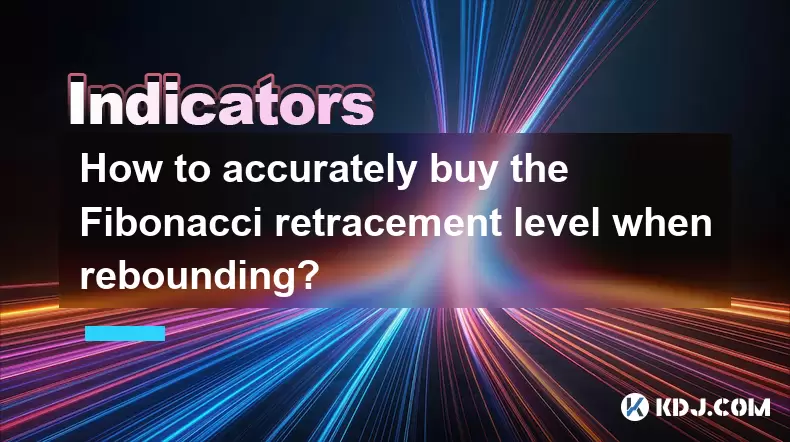
How to accurately buy the Fibonacci retracement level when rebounding?
Jun 16,2025 at 09:56pm
Understanding the Fibonacci Retracement ToolThe Fibonacci retracement is a popular technical analysis tool used by traders to identify potential support and resistance levels. It is based on the idea that markets will retrace a predictable portion of a move before continuing in the original direction. The key Fibonacci levels are typically 23.6%, 38.2%,...

How to set the stop profit point after the high-level propeller pattern?
Jun 16,2025 at 08:04pm
Understanding the High-Level Propeller PatternThe high-level propeller pattern is a technical analysis formation often observed in cryptocurrency trading charts. It typically appears at significant price peaks and signals potential reversals. The pattern consists of a large candlestick with long upper and lower shadows, resembling a propeller, indicatin...

When is the most reasonable stop loss after the three crows pattern?
Jun 16,2025 at 08:14pm
Understanding the Three Crows Pattern in Cryptocurrency TradingThe three crows pattern is a well-known bearish reversal signal in technical analysis, particularly relevant in volatile markets like cryptocurrency. It typically appears at the end of an uptrend and consists of three consecutive long red (or bearish) candles with progressively lower closes....
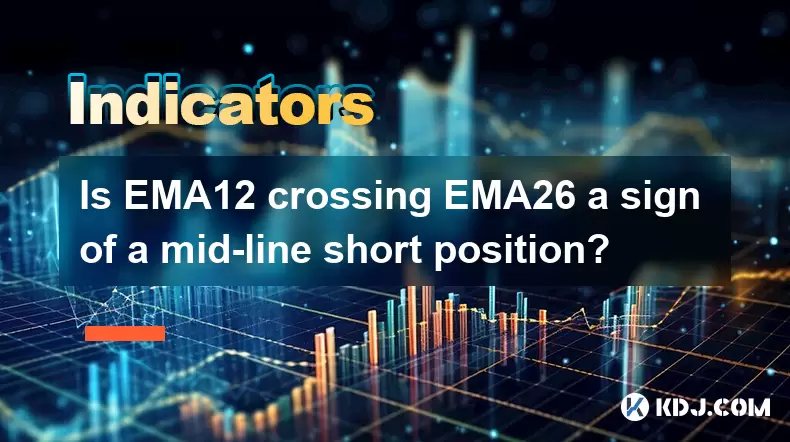
Is EMA12 crossing EMA26 a sign of a mid-line short position?
Jun 16,2025 at 07:22pm
Understanding EMA12 and EMA26 in Cryptocurrency TradingIn the world of cryptocurrency trading, Exponential Moving Averages (EMAs) are widely used tools for analyzing price trends. Specifically, the EMA12 and EMA26 are two of the most commonly referenced EMAs among traders. The EMA12 represents a short-term moving average calculated over the past 12 time...
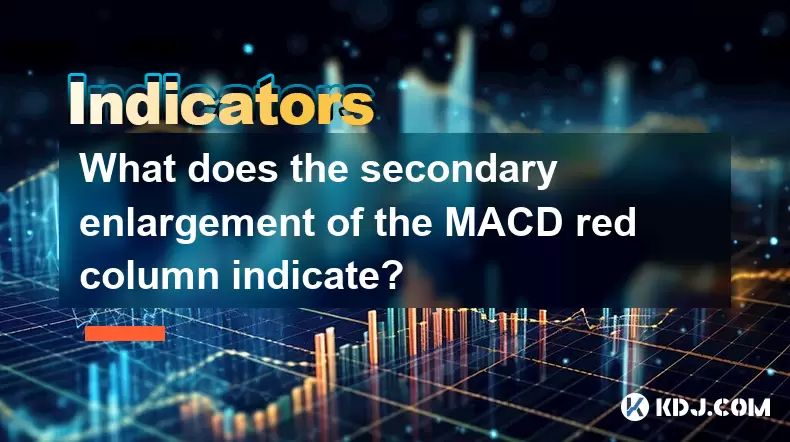
What does the secondary enlargement of the MACD red column indicate?
Jun 16,2025 at 07:49pm
Understanding the MACD Indicator and Its ComponentsThe Moving Average Convergence Divergence (MACD) is a widely used technical analysis tool in cryptocurrency trading. It consists of three main components: the MACD line, the signal line, and the MACD histogram. The histogram, represented as red or green bars, reflects the difference between the MACD lin...
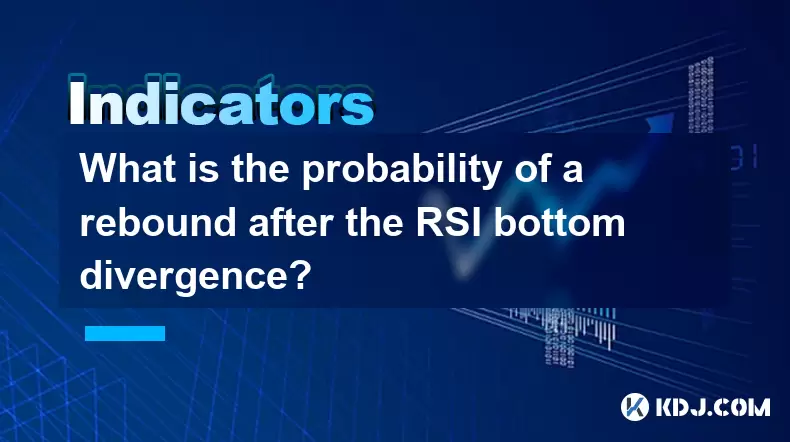
What is the probability of a rebound after the RSI bottom divergence?
Jun 16,2025 at 06:50pm
Understanding RSI Bottom Divergence in Cryptocurrency TradingThe Relative Strength Index (RSI) is a widely used momentum oscillator in technical analysis, particularly within the cryptocurrency market. It helps traders identify overbought or oversold conditions and potential reversal points. A bottom divergence occurs when the price of an asset makes a ...

How to accurately buy the Fibonacci retracement level when rebounding?
Jun 16,2025 at 09:56pm
Understanding the Fibonacci Retracement ToolThe Fibonacci retracement is a popular technical analysis tool used by traders to identify potential support and resistance levels. It is based on the idea that markets will retrace a predictable portion of a move before continuing in the original direction. The key Fibonacci levels are typically 23.6%, 38.2%,...

How to set the stop profit point after the high-level propeller pattern?
Jun 16,2025 at 08:04pm
Understanding the High-Level Propeller PatternThe high-level propeller pattern is a technical analysis formation often observed in cryptocurrency trading charts. It typically appears at significant price peaks and signals potential reversals. The pattern consists of a large candlestick with long upper and lower shadows, resembling a propeller, indicatin...

When is the most reasonable stop loss after the three crows pattern?
Jun 16,2025 at 08:14pm
Understanding the Three Crows Pattern in Cryptocurrency TradingThe three crows pattern is a well-known bearish reversal signal in technical analysis, particularly relevant in volatile markets like cryptocurrency. It typically appears at the end of an uptrend and consists of three consecutive long red (or bearish) candles with progressively lower closes....

Is EMA12 crossing EMA26 a sign of a mid-line short position?
Jun 16,2025 at 07:22pm
Understanding EMA12 and EMA26 in Cryptocurrency TradingIn the world of cryptocurrency trading, Exponential Moving Averages (EMAs) are widely used tools for analyzing price trends. Specifically, the EMA12 and EMA26 are two of the most commonly referenced EMAs among traders. The EMA12 represents a short-term moving average calculated over the past 12 time...

What does the secondary enlargement of the MACD red column indicate?
Jun 16,2025 at 07:49pm
Understanding the MACD Indicator and Its ComponentsThe Moving Average Convergence Divergence (MACD) is a widely used technical analysis tool in cryptocurrency trading. It consists of three main components: the MACD line, the signal line, and the MACD histogram. The histogram, represented as red or green bars, reflects the difference between the MACD lin...

What is the probability of a rebound after the RSI bottom divergence?
Jun 16,2025 at 06:50pm
Understanding RSI Bottom Divergence in Cryptocurrency TradingThe Relative Strength Index (RSI) is a widely used momentum oscillator in technical analysis, particularly within the cryptocurrency market. It helps traders identify overbought or oversold conditions and potential reversal points. A bottom divergence occurs when the price of an asset makes a ...
See all articles

























































































